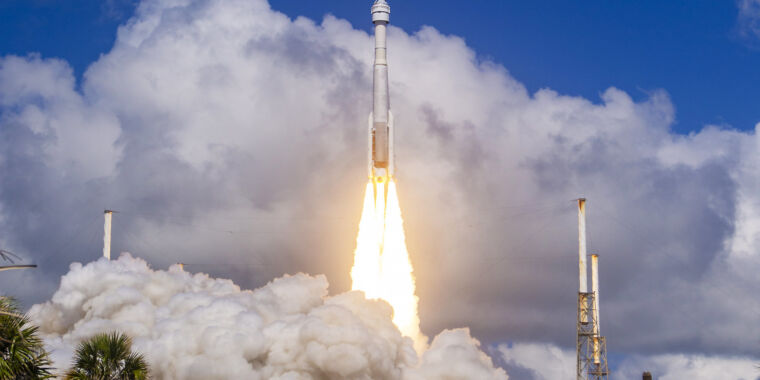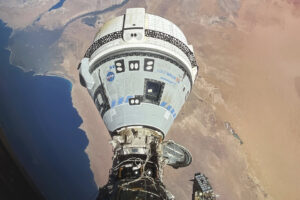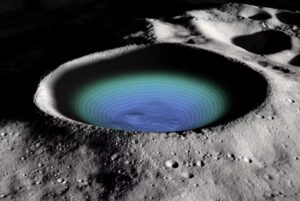In an update released late Friday evening, NASA said it was “adjusting” the date of the Starliner spacecraft’s return to Earth from June 26 to an unspecified time in July.
The announcement followed two days of meetings to review the Boeing-developed spacecraft’s readiness to fly to Earth with NASA astronauts Butch Wilmore and Sonny Williams. According to sources, those meetings involved high-level participation from senior executives at the agency, including Associate Administrator Jim Free.
This “Crew Test Flight,” which launched on June 5 atop an Atlas V rocket, was originally scheduled to detach and return to Earth on June 14. However, as engineers from NASA and Boeing studied data from the vehicle’s troubled flight to the International Space Station, they ruled out several return options.
On Friday night, they did so again, citing the need to spend more time reviewing the data.
“We are not in a hurry”
“We are taking our time and following our standard mission management team process,” said Steve Stich, NASA’s commercial crew program manager, in the NASA update. “We let the data guide our decision-making in terms of managing the small helium system leaks and thruster performance that we observed during rendezvous and docking.”
Just a few days ago, on Tuesday, representatives of NASA and Boeing set a return date of June 26. But that was before a series of meetings Thursday and Friday in which mission managers were to review findings on two major problems with the Starliner spacecraft: five separate leaks in the helium system that pressurizes the Starliner’s propulsion system and failure of five of the 28 thrusters of the vehicle’s reaction control system as the Starliner approached the station.
The NASA update did not provide any information about the discussions during those meetings, but it is clear that the agency’s leaders have not been able to get comfortable with all the contingencies that Wilmore and Williams might encounter during the return flight to Earth. including safely detaching from the space station, maneuvering, performing a deorbit, separating the crew capsule from the service module, and then flying through the planet’s atmosphere before landing with parachutes in a New Mexico desert.
The spaceship has a limit of 45 days
Now the NASA and Boeing engineering teams will take more time. Sources said NASA is considering June 30 as a possible return date, but the agency also wants to perform two spacewalks outside the station. These spacewalks, currently scheduled for June 24 and July 2, will now continue. The Starliner will return to Earth some time after that, probably no earlier than the July 4th holiday.
“We’re strategically using the extra time to clear the way for some critical station activities, while also completing preparations for Butch and Sunny’s return to Starliner and gaining valuable insight into the system upgrades we’ll want to make for post-certification missions,” said Stitch.
In some ways, it’s beneficial for NASA and Boeing to have the Starliner tethered to the space station for a longer period of time. They can gather more data about the vehicle’s performance on long-duration missions — eventually, Starliner will fly operational missions that will allow astronauts to remain in orbit for six months at a time.
However, this vehicle is only rated for a 45-day stay on the space station, and that clock started ticking on June 6. It’s also not optimal for NASA to feel the need to keep slowing the vehicle down to get comfortable with its performance on the return trip to Earth. In two press conferences since the Starliner docked at the station, officials have downplayed the overall seriousness of those problems — repeatedly saying the Starliner has permission to come home “in the event of an emergency.” But they still haven’t fully explained why they’re still not happy about releasing the Starliner to fly back to Earth under normal circumstances.



